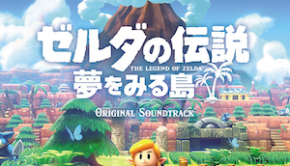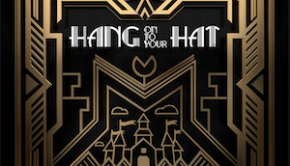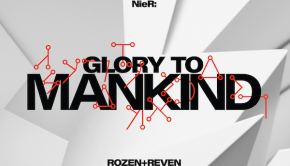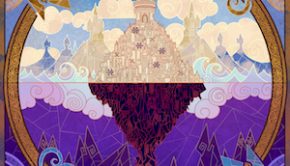Sins of Hyrule
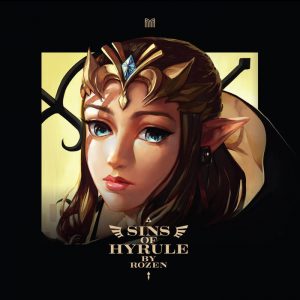 |
Album Title: Sins of Hyrule |
| Record Label: Materia Collective | |
| Catalog No.: MCOL-0059 | |
| Release Date: December 1, 2017 | |
| Purchase: Buy at Bandcamp |
Overview
This time one week ago saw the release of Rozen’s Ballads of Hyrule, an orchestral Zelda tribute project pitched in its album description as “the spiritual antithesis to my own ‘Sins of Hyrule.’” In light of Ballads of Hyrule’s overall success, Zelda fans and newcomers to Rozen’s work may be tempted to give the album’s grittier predecessor, Sins of Hyrule, their time and attention.
They’ll be glad they did.
Body
Sins of Hyrule is indeed a different type of album than its successor. Though both are primarily concerned with the orchestration of Zelda music, each has its own target aesthetic. Where Ballads of Hyrule strove for a mellower mood, Sins of Hyrule takes inspiration from the darker side of Zelda lore; and much of that lore revolves around an eternal war with the demon king Ganon.
The timeless chromatic motifs composed for Ganon by Koji Kondo play a central role in Sins of Hyrule. “A King Is Born” reworks these motifs into a solo piano piece capped off with Ocarina of Time’s “Requiem of Spirit” and, curiously, The Legend of Zelda’s age old secret sound cue, altogether telling the story of a man in the desert with a thirst for power who conceives a plot to conquer the world. “Gerudo Legend,” co-credited to Rozen and vocalist Julie Elven, delivers an invigorating version of Ganon’s theme through a raucous unison of barroom piano and pipe organ, which compliments the thunderous orchestration and vocals rendering the “Gerudo Valley” theme perfectly. The London Strings ensemble contributes an unnerving descending violin slide to the theme in “Monarchy of Shadow,” all while alluding to A Link to the Past’s “Hyrule Castle” and “Death Mountain” themes, as well as “Midna’s Theme” from Twilight Princess, in under a minute’s time. Even the album’s “Breath of the Wild” arrangement hints in its last few seconds at the presence of Ganon. What makes the occasional inclusion of these chromaticisms so special is the intention behind them. Rozen has set out to depict an ongoing struggle against an iconic villain in various incarnations, and by tying his musical theme to classic tunes from across the Zelda timeline, Rozen has succeeded in portraying Ganon as a recurrent nightmare for Hyrule.
Elsewhere, Rozen has handpicked classic musical moments for which the theme of Ganon came included. While these arrangements remain largely faithful to their source material, even they benefit from orchestral facelifts and the occasional twist here and there. Electric guitar may not readily come to mind when one thinks of Zelda music, but producer Theophany of Time’s End: Majora’s Mask Remixed fame and guitarist Maxwell Carlisle make it work, taking the fourth phase of music from Twilight Princess’s final battle suite to rocking territory in “Dark Lord Ganondorf.” Electric guitar makes a lyrical return in “Calamity,” a tribute to Breath of the Wild’s “Calamity Ganon” boss theme with exciting new four-against-three polyrhythms. “Castle in Ruins” adds some unsettling cello texture and a surprising synth transition to Breath of the Wild’s “Hyrule Castle,” and the ETHEReal String Orchestra’s “King of Light and Shadow” does absolute justice to “Ganon’s Tower” from Ocarina of Time with shrill high-end dissonance and wailing violin solos. Hearing these harrowing themes enshrined in fan-based orchestral arrangements is a rare treat, and the variety of talent and unique approaches behind each arrangement makes Sins of Hyrule’s attention to detail and lore all the more apparent.
Yet for all of the ominous undertones present in some arrangements, there are moments of hope and courage to be found in others. “The Ancient Battle” blends A Link to the Past’s “Great Fairy’s Fountain” theme with “Chamber of the Sages” and “Deku Tree” from Ocarina of Time, converting all three into one glorious call to arms led by the dramatic vocals of Laura Intravia. “Song of Hylia” amends the chord progression of “Zelda’s Lullaby” with an original melody, tossing in references to Twilight Princess’s “Hyrule Field” theme and an uplifting nod to Ocarina of Time’s “Serenade of Water.” “Battle for the Sacred Realm” makes grand use of Ocarina of Time’s “Song of Time,” contrasting it with a precious moment of “Zelda’s Lullaby” in minor on piano. “Ballad of the Goddess” from Skyward Sword receives as triumphant a new arrangement as any fan could hope for, colored with some whimsical pitched percussion. “Breath of the Wild” provides momentary relief from the album’s battles with a heartfelt oboe solo and Reven’s rich vocal harmonies. These lighter tracks make for effective counterparts to the darker tone of the album overall, and the dynamic shifts between darkness and light are what make the album so compelling from a storytelling perspective.
The Legend of Zelda’s namesake princess once proposed that “shadow and light are two sides of the same coin.” Sins of Hyrule proves them to be two sides of the same vinyl record; and as the album comes to a close, darkness and light merge for an epic clash. “Ganon’s Requiem” strips away the urgency from Ocarina of Time’s “Last Battle” and revels in its anguished string progressions. That is, until the track shifts into an inspirational choral sendoff on an epic chord progression. That chord progression returns for an encore in the conclusion of the album, the titular “Sins of Hyrule,” which moves from lush choral moments reminiscent of the works of Jeremey Soule to blaring orchestral battlecries before fading away with quiet piano allusions to the main theme of The Legend of Zelda.
Summary
Any imperfections in Sins of Hyrule are minor – something just feels slightly lost in the chord progression alterations made to “Ballad of the Goddess” and Breath of the Wild’s main theme – and these issues really boil down to matters of personal preference anyway. Faulting the album in any other respect is a difficult endeavor. The production values are high, the sound palette is consistent and balanced, and there’s a hearty helping not only of fresh takes on Zelda classics but also of completely original and complimentary musical content.
Rozen has accomplished a grand goal with Sins of Hyrule, tying together disparate fragments of lore from a franchise split into multiple timelines to tell the story of an epic multi-generational war. While Ballads of Hyrule may be the more contemporary of the two albums, this “spiritual antithesis” is well worth revisiting for any Zelda fan.
They’ll be happy they took the time and effort to do so. They’ll be happier still that Rozen did too.
Do you agree with the review and score? Let us know in the comments below!
4.5
Posted on May 8, 2018 by Reilly Farrell. Last modified on May 8, 2018.

